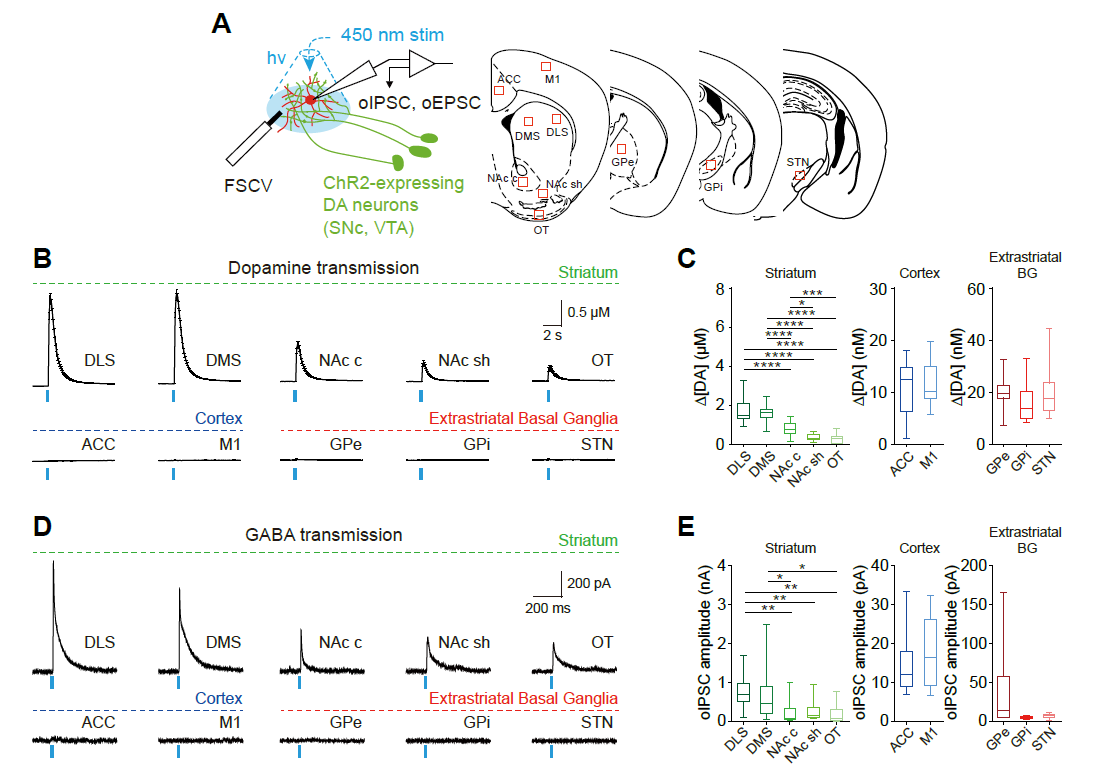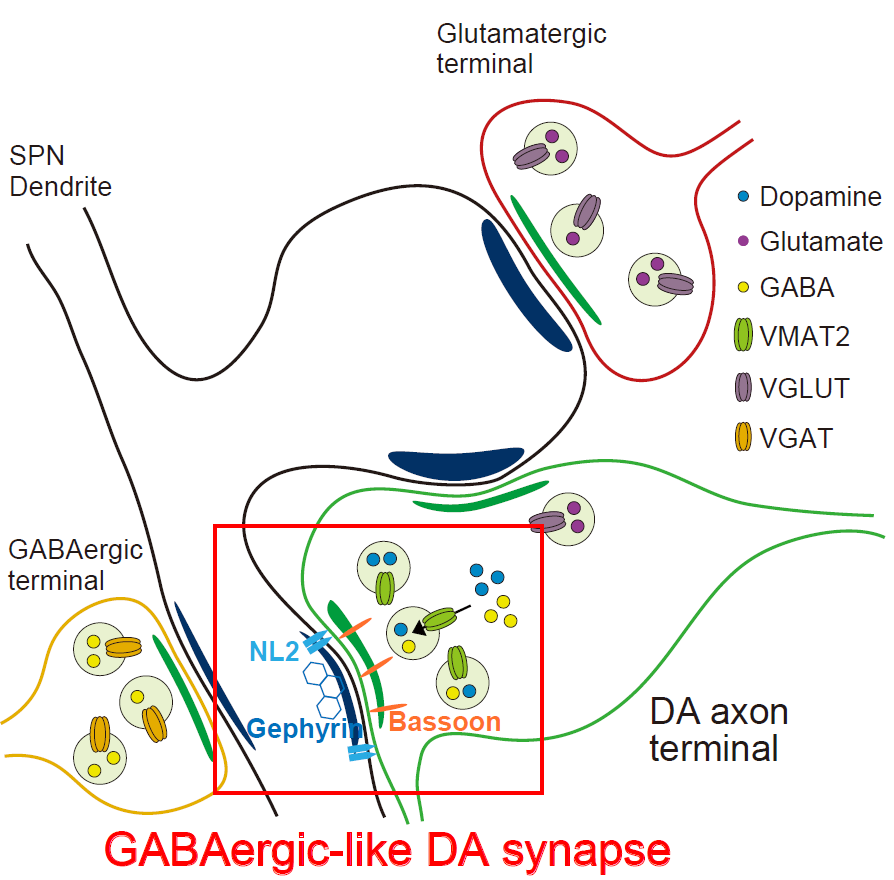Abstract
In a groundbreaking study, researchers at UNIST have uncovered a significant characteristic of dopamine synapses, shedding light on their role in volitional movement, reward-related behaviors, and their association with various psychiatric and neurological disorders. The findings, published in the esteemed academic journal Cell Reports, provide crucial insights into the biological nature of dopamine synapses and their potential implications for early detection and treatment of dopamine-related brain diseases such as Parkinson's disease.
Dopamine synapses, responsible for the transmission of dopamine, one of the brain's primary neurotransmitters, have long been the subject of scientific inquiry. However, their true biological nature has remained elusive until now. Led by Professor Jae-Ick Kim from the Department of Biological Sciences at UNIST, the research team has discovered that dopamine synapses exhibit remarkable similarities to inhibitory synapses, which utilize the neurotransmitter gamma-aminobutyric acid (GABA) to inhibit excessive neuronal activity.

Figure 1. GABA co-transmission co-exists with DA transmission at DA synapses in the brain. (A) Schematic illustration depicting electrophysiological recording of synaptic transmission at DA synapses in the multiple brain regions, (B-C) Representative recording traces and summary statistics of DA transmission in the brain (n = 12-32 slices), and (D-E) Representative recording traces and summary statistics of GABA transmission at DA synapses (n = 7-17 cells).
The team's findings demonstrate a strong correlation between dopamine transmission and GABA co-transmission across the brain, unveiling the structured and functional nature of GABAergic-like dopamine synapses. These synapses exhibit marked regional heterogeneity and are clustered on the dendrites, providing important insights into their spatial organization. Moreover, the study reveals distinct physiological properties of GABA transmission at dopamine synapses.
Surprisingly, the knockdown of neuroligin-2, a key postsynaptic protein at GABAergic synapses, does not weaken GABA co-transmission but instead facilitates it at dopamine synapses in striatal neurons. This unexpected result highlights the intricate interplay between neurotransmitters and synaptic proteins, further deepening our understanding of dopamine synapses' functionality.
In an animal model of Parkinson's disease, the researchers discovered that the attenuation of GABA co-transmission precedes deficits in dopaminergic transmission. This finding suggests that monitoring GABA levels could potentially serve as an early indicator of Parkinson's disease progression. The study also experimentally confirmed the possibility that supplementing reduced GABA could slow the advancement of Parkinson's disease, opening new avenues for treatment development.

Figure 2. GABAergic-like DA synapse
"By measuring neurotransmitters such as dopamine and GABA and improving high-resolution synaptic imaging methods, we were able to identify new physiological properties of dopamine synapses," explained the first author Hyun-Jin Kim (Department of Biological Sciences, UNIST). "Our research reveals the crucial role of inhibitory synapse properties within dopamine synapses, contributing to their survival."
Professor Kim emphasized the significance of the study's findings, stating, "Understanding the unique properties of dopamine synapses will not only aid in the early detection of dopamine-related brain diseases but also pave the way for the development of targeted treatments, particularly for Parkinson's disease."
This study has been supported by the Ministry of Science and ICT (MSIT), the National Research Foundation of Korea (NRF), and the POSCO Science Fellowship of the POSCO TJ Park Foundation.
Journal Reference
Hyun-Jin Kim, Byungjae Hwang, Maria Reva, et al., "GABAergic-like dopamine synapses in the brain," Cell Reports, (2023).






